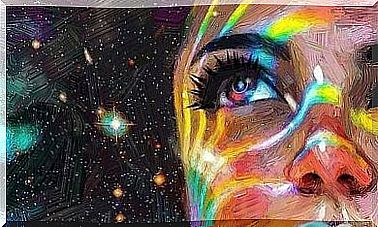Stendhal Syndrome, Origin And Symptoms

If you are an art lover and you happen to feel overwhelmed by a work of art or you get goosebumps every time you enter a museum, don’t worry! This is entirely natural. Nevertheless, there are extremely sensitive people who in such situations manifest the symptoms of Stendhal syndrome, also called Florence syndrome, traveler’s stress or museum illness.
This particular syndrome is triggered by the observation of breathtaking works of art. The story of his discovery, which was accidental, is very curious, almost as much as the phenomenon itself. Let’s find out together the Stendhal syndrome .
Origin of Stendhal’s syndrome: Florentine art
In 1817 Henri-Marie Beyle, the famous and prestigious French writer, went around Italy to gather information for his new book. Your pseudonym? Stendhal!
During his stay in Florence he visited every corner of the city. He was entranced by the streets of the city, which oozed art from every pore: museums, churches, domes, landscapes, sculptures, facades, frescoes, etc. Bayle didn’t want to miss anything.
While he was visiting the Basilica of Santa Croce, his perplexity, his amazement and his enthusiasm resulted in a series of physical ailments. Mainly cold sweat and a feeling of deep distress. Her heart rate quickened and she began to feel dizzy. He had to sit down and rest for a while; once the crisis was over he began to reflect.

As he himself wrote later in his book Rome, Naples and Florence – Italy travels from Milan to Reggio Calabria , his experience offered important insights into psychology and medicine. Stendhal described his experience thus:
His crucial and detailed description of the phenomenon caused the aforementioned sensation to go down in history as Stendhal’s syndrome, in honor of the discovery of his symptoms.
Symptoms of Stendhal’s Syndrome
It took another century for this condition to be considered for the first time as a syndrome. In 1979, the Italian psychiatrist Graziella Magherini analyzed and studied about a hundred similar cases that occurred in some tourists visiting Florence. He observed that the set of symptoms presented could be summed up in a nice metaphor: it was a sort of “artistic indigestion”.
Common symptoms include tachycardia, hyperdrosis, palpitations, choking, tremors, emotional tension and exhaustion. And, in severe cases, dizziness, dizziness and even depression.
Some consider Stendhal’s syndrome a psychosomatic disorder, due to the bidirectional relationship that exists between mind and body. In this case, the physical symptoms described above would be caused by dismay. Others consider it a “spiritual disturbance” instead. Stendhal syndrome is therefore triggered by the sight of exaggerated beauty in a short period of time and can be chronic. It is therefore a kind of artistic shock.
Can it hit anyone?
Any person can have symptoms associated with the syndrome in question. We all feel exhausted, nauseated and feel the heartbeat increase. This moment of bewilderment does not necessarily coincide with admiring a work of art. A rather unusual syndrome, there is no doubt.
It usually affects tourists who are particularly sensitive to art, who travel for the purpose of admiring the artistic heritage of the cities they visit. They usually go wild in places that fascinate them and that for some reason have a great emotional charge.
Suggestion or reality?
Over the past few decades, Stendhal syndrome has become a frequent reaction in individuals admiring a work of art, especially when it comes to particularly well-preserved works all in the same place. But, as always, the topic has sparked several controversies.
When we listen to a certain song, we remember certain moments, there is no doubt about it. Similarly, it does not seem strange to us to have the chills during a theatrical performance, there is something that moves us deep inside. Art is pure emotion.
However, and despite being a condition recognized by most clinical psychologists, some still question Stendhal’s syndrome, considering it a kind of myth. In other words, they consider it pure suggestion, something that exists only in our mind. The most skeptical even come to believe that the tourists affected by the alleged syndrome are simply the victims of a bad joke played on them by their unconscious. The symptoms felt would therefore be the result of a suggestion.
Economic motivation?
Florence was the cradle of the Renaissance and continues to be one of the most beautiful and richest cities from an artistic point of view. For this reason, the scientific community fears that behind this phenomenon there is an economic interest, for example the intention to attract more visitors, increase earnings or make more and more people aware of its beauty.
And you, what do you think? Is it just a way to get the attention of new tourists or can looking at too many works of art in a short amount of time cause physical alterations?









